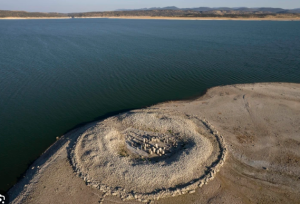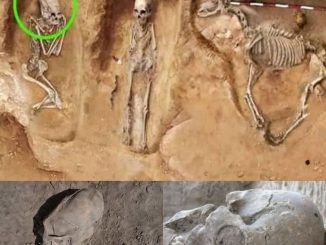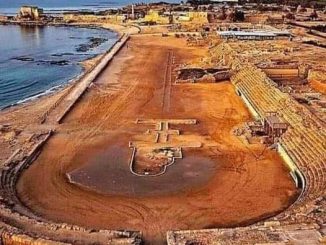A Revelation from the Depths
In the heart of Spain, a remarkable piece of history has reemerged from its watery grave, offering a glimpse into a past far older than we had imagined. Known as the “Spanish Stonehenge,” this megalithic monument, hidden for decades beneath the waters of a reservoir, has been revealed once more due to a severe drought. This ancient structure, estimated to be around 7,000 years old, predates its British counterpart by some 2,000 years, challenging our understanding of prehistoric Europe’s architectural and societal capabilities.
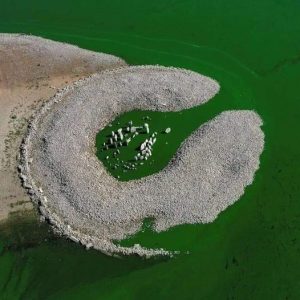
A Monument Older Than the Pyramids
The “Spanish Stonehenge,” formally known as the Dolmen of Guadalperal, comprises dozens of megalithic stones arranged in a circular formation. Its discovery and subsequent exposure have sparked excitement and intrigue within the archaeological community and beyond. The images accompanying this post capture the stark, haunting beauty of the stone circle, its massive boulders standing as silent witnesses to millennia of history. These stones, now basking in the sun after years of submersion, offer a tangible connection to the people who once gathered within their circle.
As researchers and historians delve deeper into the origins and purpose of this monument, questions abound regarding the society that constructed such a feat. Theories suggest it may have served as a religious temple, an astronomical observatory, or a burial ground, reflecting the complex spiritual and societal structures of the time.
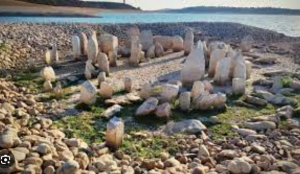
The Impact of Climate on Archaeological Discoveries
The unveiling of the Dolmen of Guadalperal serves as a poignant reminder of the impact climate change and environmental factors have on the preservation and discovery of archaeological sites. While the drought that led to the monument’s exposure speaks to a concerning global trend, it also opens the door for invaluable research opportunities. These periods of environmental change allow scientists to study, document, and preserve ancient sites that are usually inaccessible.
The photographs of the monument, standing against the backdrop of the drying reservoir, underscore the urgency of these efforts. They not only capture the monument’s enigmatic presence but also highlight the delicate balance between nature and preservation. As we face increasing environmental challenges, the race to study and safeguard such sites before they are once again hidden or, worse, irreparably damaged, becomes more critical.
understanding of prehistoric Europe but also ignites a renewed sense of wonder and curiosity about what other secrets lie buried, awaiting the right moment to emerge into the light of modern discovery. In embracing our ancient heritage, we open ourselves to the endless possibilities of learning and connection, bridging the gap between past, present, and future.
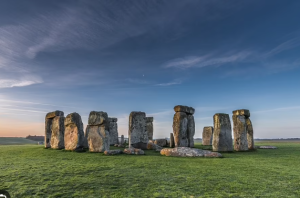
Preserving the Legacy of Ancient Discoveries
The discovery of the “Spanish Stonehenge” is a testament to the enduring allure of ancient civilizations and their monuments. It underscores the importance of archaeological preservation in understanding our shared history and heritage. As we marvel at the images of this prehistoric site, we are reminded of the countless other mysteries that lie waiting beneath the surface of our planet, secrets of ancient societies that have yet to be uncovered.
The resurgence of the Dolmen of Guadalperal offers a unique opportunity to reflect on the legacy of our ancestors and the importance of protecting these ancient sites for future generations. It is a call to action for researchers, historians, and governments worldwide to prioritize the conservation of our cultural heritage, ensuring that these monumental testaments to human ingenuity endure for millennia to come.
In conclusion, the reemergence of Spain’s ancient megalithic monument from its watery hiding place is a powerful reminder of the depth and richness of human history. As we continue to explore and unravel the mysteries of our past, let us commit to preserving these windows into ancient worlds, ensuring that they remain to inspire, educate, and awe future generations.
